INDEX
Strategies for Plastic Surgeons
Digital marketing for plastic surgeons is not just about visibility—it’s about trust, authority, and patient conversion. In today’s competitive landscape, where patients research every option before booking a consultation, traditional advertising no longer works on its own. Instead, surgeons need a layered strategy that combines local SEO, paid media, patient reviews, content marketing, and compliance-focused messaging.
This guide—backed by over 10 years of field experience helping clinics scale—isn’t theory. It’s built from real-world campaigns that generated measurable results, including clinics in Miami that grew from anonymity to 46,000+ monthly impressions and others that sustained 48.8% YoY organic growth.
We’ll explore how to craft messaging that sells lifestyle transformation, not just procedures; how to dominate Google Maps and organic search; how to structure ads that comply with platform restrictions yet still convert; and how to nurture leads with CRM automation until they book.
If you’re a plastic surgeon serious about scaling your practice, this isn’t another “5 tips” blog. This is the definitive playbook to build a sustainable, patient-generating marketing engine.
Why Plastic Surgery Marketing Is Different
Elective Buyer Journey & Trust Signals
Plastic surgery is unique because it sits at the intersection of healthcare and lifestyle. Patients are not searching for urgent medical interventions; they are considering elective procedures that will change how they look and feel about themselves. This means their journey is longer, more emotional, and more trust-dependent than almost any other medical service. They want proof that you are not only skilled but safe, reputable, and capable of delivering the results they envision.
Trust is built in layers. First impressions come from your digital presence: your website, your reviews, your photos. The second layer is the consistency of your messaging and the authenticity of your content. Patients are extremely sensitive to anything that feels like an exaggeration or a sales gimmick. What they want to see is professionalism combined with relatability. That’s where frameworks like Google’s E-E-A-T—Experience, Expertise, Authoritativeness, and Trustworthiness—become more than just an SEO guideline. They are the exact criteria by which patients evaluate you before they ever set foot in your office.

Compliance also sets plastic surgery apart. Unlike other industries where marketers can use flashy images and bold promises, plastic surgery marketing must adhere to HIPAA regulations, medical board standards, and advertising policies that often restrict before-and-after imagery. This forces creative but ethical solutions. The most successful clinics learn how to showcase results while remaining compliant, using lifestyle imagery, testimonials, and carefully worded copy that highlight transformation without overstepping boundaries. The practices that master this balance don’t just avoid risks—they actually build deeper trust with patients who recognize authenticity.
Growth Goals and Metrics That Matter
It is impossible to scale a plastic surgery practice without clear metrics. Too often, clinics spend on ads or SEO without truly knowing whether they are generating a return. Marketing must be treated like a business investment, not a gamble. That means defining and tracking numbers at every stage of the patient acquisition pipeline.
Start with pipeline math. If your clinic wants twenty new surgeries per month, you need to know how many consultations are required to get there, how many leads it takes to secure those consultations, and how many impressions and clicks are needed to generate those leads. With these numbers, you can work backward to set realistic budgets for advertising, content creation, and outreach. Without them, you are flying blind.
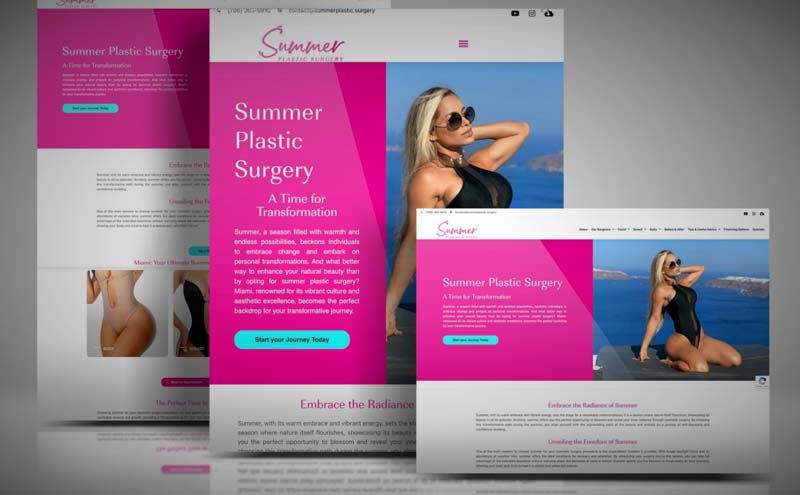
Unit economics are equally important. The cost to acquire a new patient (CAC) must always be weighed against the lifetime value (LTV) of that patient. Some patients will book a single procedure, while others may return for multiple services or refer friends and family. Understanding these dynamics allows you to scale with confidence. For example, if your CAC is $800 but your average patient brings $8,000 in revenue over their lifetime, you can safely invest more aggressively in acquisition channels that work.
Finally, tracking must be airtight. At minimum, you need Google Analytics 4 set up properly, conversion tracking that records form fills, calls, and online bookings, and a HIPAA-compliant CRM to store and categorize leads. Without this infrastructure, you cannot identify which channels are producing real patients versus empty clicks. The best practices don’t just track—they analyze, optimize, and refine their campaigns every month to reduce costs and improve performance.
Brand Positioning & Messaging That Converts
Plastic surgery is one of the few industries where patients are not only buying a service—they are buying an identity upgrade. The way you position your practice and craft your messaging determines whether patients see you as just another option in their city or as the only surgeon who truly understands their needs. Too many practices default to generic language such as “safe and affordable cosmetic surgery,” which does little to inspire confidence or differentiate them from competitors. What works is positioning that taps into the emotional core of why patients seek surgery in the first place: confidence, lifestyle change, and empowerment.
Your value proposition should go beyond procedures. A patient considering a mommy makeover is not simply thinking about a tummy tuck and breast lift; she is thinking about regaining her sense of self after childbirth. A man considering rhinoplasty is not just looking to alter his nose; he is imagining how the change might transform how he is perceived socially and professionally. Marketing that speaks to these emotional drivers resonates far more than a technical list of services. When messaging is aligned with patient aspirations, conversion rates rise dramatically.
I have seen this play out in real campaigns. One of the clearest examples is Zion Plastic Surgery in Miami. Initially, their messaging was procedural, focusing heavily on listing out surgeries and technical explanations. But when we shifted the branding to highlight the lifestyle impact—anchored in the tagline “A change in your lifestyle”—everything changed. Patients no longer saw the clinic as just a provider of cosmetic services; they saw it as a gateway to transformation. That shift, combined with SEO and advertising, pushed the clinic to over 46,000 monthly impressions and brought them to the top of Google rankings for their priority services in under eight months.
Copywriting frameworks can help systematize this approach. For surgical services, messaging should emphasize safety, expertise, and life-changing outcomes. For med-spa or non-surgical services, the tone can be lighter, focusing on convenience, self-care, and quick confidence boosts. Blending aspirational language with practical reassurance builds a narrative that feels both inspiring and trustworthy. In an industry where patients are often overwhelmed by choices, clear positioning and emotionally intelligent messaging can be the deciding factor that leads them to choose your practice.
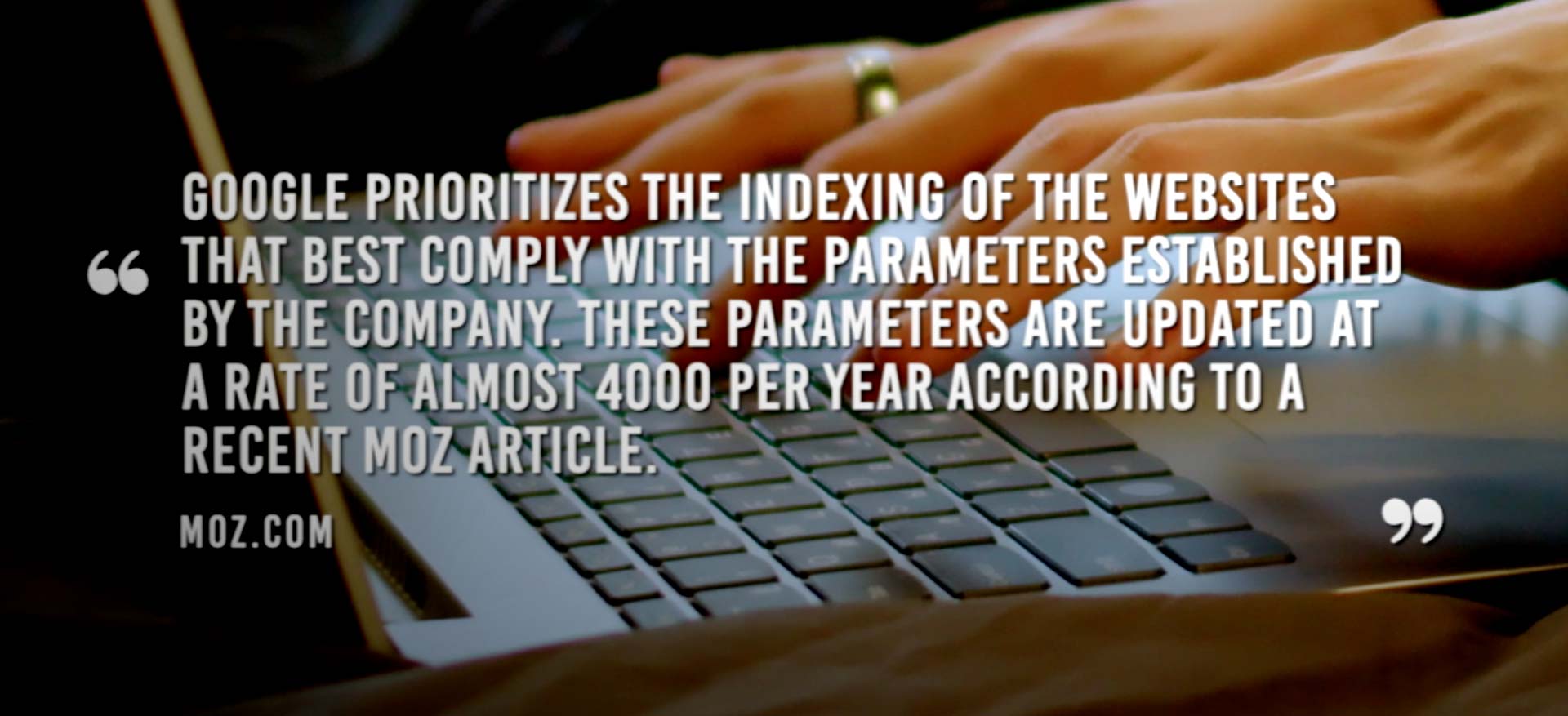
Website That Converts (CRO-First)
Your website is not just an online presence—it is the front door to your practice and the single most important digital asset you own. In a world where patients are searching, comparing, and analyzing every detail before making a decision, your website must do much more than provide information. It has to persuade, reassure, and convert. For many prospective patients, the website is the first serious interaction with your brand, and it will often determine whether they trust you enough to book a consultation. That means every pixel and every line of copy must be intentional.
The design and layout of a plastic surgery website should create an immediate sense of professionalism and safety. Patients need to feel that they are in the hands of experts from the very first moment they land on your homepage. That’s why elements like strong surgeon bios, accreditations, and well-crafted headlines are non-negotiable. Even something as simple as a clean design and a well-chosen hero image can set the tone for the entire user journey. Beyond aesthetics, the content of the site must address the unspoken fears and questions patients have: Is this surgeon trustworthy? Can I really expect the results I want? How will this change my life?
One of the most powerful conversion drivers is the before-and-after gallery. When done right—with consistent lighting, standardized angles, and proper patient consent—these galleries act as visual proof of your capabilities. They are not just photographs; they are testimonials in image form. Alongside this, strategically placed testimonials and patient stories build an emotional connection. A visitor should leave your site not just knowing what you do, but feeling what it’s like to be one of your patients.
Of course, design and content are only half of the equation. Technical performance is equally crucial. Google’s Core Web Vitals—metrics for speed, stability, and interactivity—are now central to both SEO and user experience. If your site loads slowly or is clunky on mobile, you’re not just losing rankings, you’re losing patients. More than 60% of elective procedure searches now happen on smartphones, which means mobile optimization is not optional. From compressed images to click-to-call buttons, every detail should be engineered to remove friction and make the path to booking as seamless as possible.
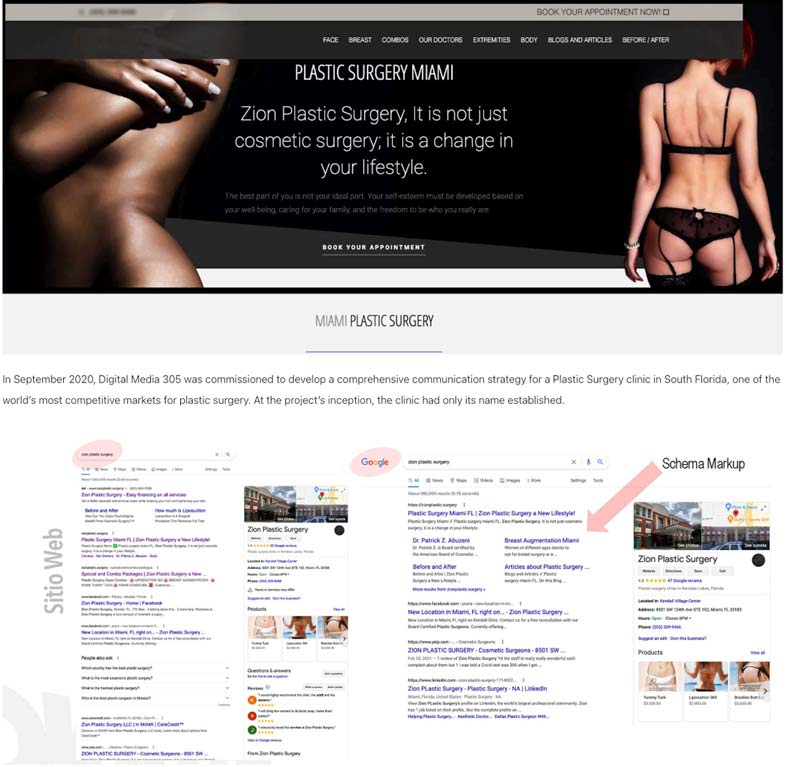
Finally, a CRO-first website should be structured in a way that helps both humans and search engines. Schema markup for medical services, structured FAQs, and logical internal linking tell Google exactly what your site is about while guiding patients deeper into your funnel. This dual optimization ensures that the traffic you attract is not just high in volume but also high in quality. A beautifully designed site that also ranks well and loads instantly is a patient acquisition machine. When your website combines trust-building elements, technical performance, and user-friendly navigation, it doesn’t just inform—it converts.
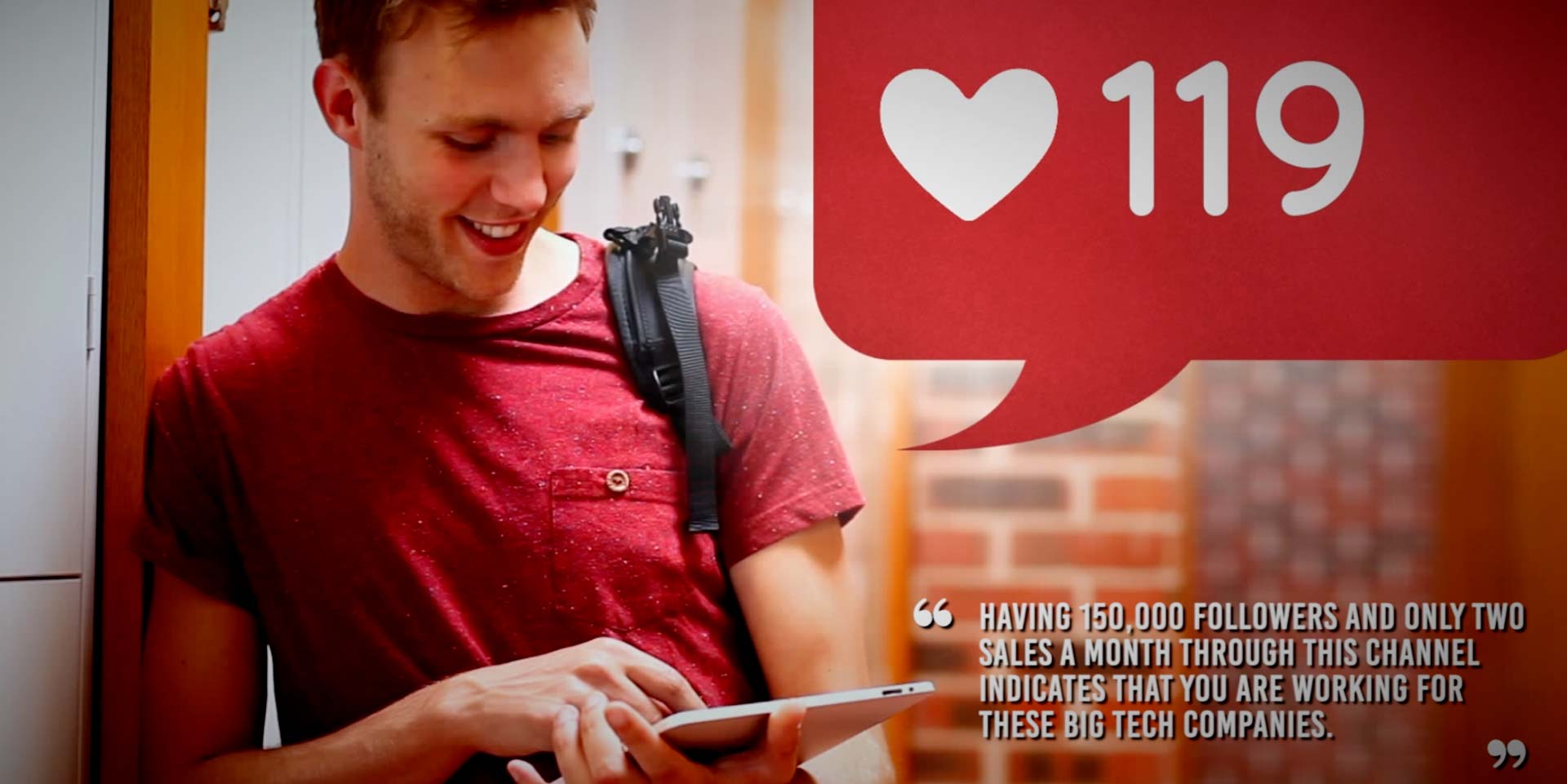
Local SEO & Google Business Profile (GBP)
For most plastic surgeons, the battleground for new patients is local search. When someone types “plastic surgeon near me” or “best rhinoplasty Miami”, they are not casually browsing—they are signaling high intent and often ready to book a consultation within weeks. This is why local SEO and your Google Business Profile (GBP) are critical pillars of your marketing strategy. Without strong local visibility, even the best website and ads will struggle to convert consistently.
Your Google Business Profile is effectively your second homepage. For many patients, it’s the first thing they see in search results before they ever click through to your site. An optimized GBP gives them everything they need at a glance: photos of your practice, reviews from real patients, a click-to-call button, directions, and even answers to common questions. The difference between a well-optimized profile and a neglected one is night and day. Clinics with updated categories, detailed service menus, professional images, and actively managed Q&A sections appear far more credible—and they get significantly more clicks.
Citations also play a big role in local SEO. These are mentions of your practice’s name, address, and phone number (NAP) across the web. Google rewards consistency. If your information is accurate and uniform across directories, social profiles, and review sites, your clinic earns authority. On the other hand, conflicting details—like an old phone number or outdated address—create confusion and hurt rankings. This is why a local SEO audit should be part of your routine.
But the most powerful driver of local rankings—and trust—is patient reviews. A steady flow of authentic, detailed reviews does more for your reputation than any ad campaign ever could. Prospective patients don’t just read the star rating; they read the stories. They want to see patients like themselves describing real experiences, from the consultation process to the recovery journey. Responding to reviews, both positive and negative, shows that your practice is engaged and cares about patient feedback. This responsiveness is noticed not only by potential patients but also by Google’s algorithm, which favors active businesses.
A case from Miami illustrates this perfectly. A clinic with strong SEO fundamentals but few reviews was plateauing in search rankings. Once they implemented a structured review strategy—automated email and SMS requests timed right after successful consultations—their profile exploded with positive feedback. Within months, they dominated the local map pack for their target procedures, driving a surge in inbound calls. The lesson is clear: your GBP is not a “set it and forget it” asset. It requires ongoing care, updates, and patient engagement. Done right, it becomes one of your highest-performing acquisition channels, bringing in patients already primed to book.
SEO Strategy for Surgeons
Search engine optimization is the foundation of long-term growth for plastic surgeons. Paid ads can generate quick wins, but SEO is what compounds over time, turning your website into a patient-generating asset that works 24/7. When a patient searches for procedures, costs, recovery times, or risks, they are in research mode—and the clinics that consistently appear in those searches become the trusted authorities in their market. Without a strong SEO strategy, you are invisible to the very patients actively looking for your services.
The first step is building a topical map. Plastic surgery is an industry where patients have endless questions, and each of those questions is a keyword opportunity. A robust SEO plan organizes these into clusters: procedure-specific topics like rhinoplasty, liposuction, breast augmentation, or mommy makeover; informational topics like “What is recovery like after a tummy tuck?” or “How much does a facelift cost in Miami?”; and decision-stage topics like financing options, risks, and candidacy requirements. Each cluster needs its own hub page supported by detailed blog posts that answer related questions. This structure signals authority to Google and helps patients find exactly what they are looking for.
Internal linking is the connective tissue of a strong SEO strategy. It’s not enough to publish content; you must guide patients through it. A blog post on “liposuction recovery tips” should link directly to your liposuction procedure page, and that page should link back to related FAQs and before-and-after galleries. This creates a natural funnel where patients move from curiosity to conversion. The longer they stay on your site exploring related content, the stronger both your SEO rankings and your chances of earning a consultation.
A powerful real-world example of SEO success comes from Dolls Plastic Surgery in Miami. By implementing a structured content hub strategy, combined with reputation-driven link building and bilingual content to target both English and Spanish-speaking patients, the clinic achieved a remarkable 48.8% year-over-year organic growth. This wasn’t the result of a single viral post or a one-off campaign—it was the steady, disciplined publishing of high-quality, keyword-targeted content paired with local authority signals. That compounding effect positioned the clinic as not only a top search result but also as the go-to authority for cosmetic procedures in its region.

The takeaway is clear: SEO is not about quick tricks or stuffing keywords. It’s about building trust with both Google and your prospective patients by consistently publishing valuable, authoritative content. When paired with strong on-page optimization, technical SEO, and local credibility through reviews and citations, your practice can dominate search results for years to come. And unlike ads, every ranking you earn continues to pay dividends long after the content is published.
Content Marketing Playbook
If SEO builds the foundation of your visibility, content marketing is what gives your brand a voice. For plastic surgeons, content is not just about filling a blog—it is about answering the real questions patients are asking, showcasing expertise, and creating assets that nurture trust over time. In an industry where the decision-making cycle is long and highly emotional, content has the power to keep your practice top of mind from the first search until the final consultation.
Video content is one of the most powerful tools in a surgeon’s arsenal. Patients want to see, not just read. Short-form videos—whether on TikTok, Instagram Reels, or YouTube Shorts—offer glimpses into the consultation process, explanations of procedures, or even day-in-the-life clips from the operating room (when done with compliance in mind). These pieces humanize the surgeon, demystify the process, and make the idea of surgery feel more approachable. Longer-form YouTube content also performs incredibly well, as it allows for detailed walkthroughs of procedures, recovery expectations, and patient testimonials. A prospective patient watching a 10-minute video on “What recovery from a tummy tuck really looks like” is far more likely to book with the surgeon who produced that content.
Before-and-after photography remains a cornerstone of plastic surgery marketing, but how it is presented makes all the difference. High-quality galleries with standardized angles and lighting build credibility, while sloppy or inconsistent photos undermine trust. Each gallery should not only display results but also tell a story: who the patient was before, what their goals were, and how the transformation impacted their life. These narratives, when paired with visuals, are far more persuasive than images alone.
Written content also plays a critical role. Blog articles, FAQs, and educational guides can answer patient concerns in depth, such as “How much does rhinoplasty cost in Miami?” or “What are the risks of liposuction?” By addressing these topics directly, your practice not only improves SEO but also positions itself as the authoritative voice in the market. When patients feel informed and reassured by your content, they are more likely to trust you as their surgeon of choice.
At Digital Media 305 we specialize in growing medical practices like yours.
In multicultural markets, bilingual content can be a game-changer. For example, Miami practices that publish procedure pages and videos in both English and Spanish can tap into a significantly broader patient base. This not only boosts reach but also builds cultural trust by showing patients that you understand their language and their community.
The bottom line is that content is an investment, not a one-off effort. Every video, article, and photo becomes a digital asset that works around the clock to attract, educate, and convert patients. While ads stop the moment you stop paying, content keeps compounding. The most successful practices are those that commit to content marketing as a long-term strategy, consistently publishing material that educates, inspires, and connects with patients on an emotional level.
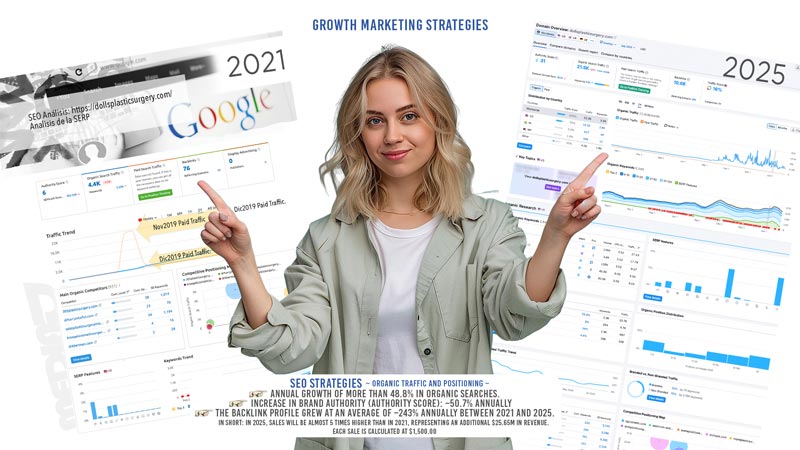
Paid Acquisition: Google, Meta, TikTok
While SEO and content marketing create long-term momentum, paid acquisition channels provide immediate visibility and lead flow. For plastic surgeons competing in saturated markets, platforms like Google Ads, Meta (Facebook/Instagram), YouTube, and TikTok can be the difference between a steady pipeline of consultations and months of waiting for organic traffic to mature. Paid media is not a replacement for organic strategies—it is the accelerator that allows you to test messaging quickly, target high-intent audiences, and generate measurable results in real time.
Google Ads remains the cornerstone of paid acquisition for surgeons. Patients who type “breast augmentation Miami” or “best facelift surgeon near me” are signaling strong intent. These are not casual browsers; they are individuals actively seeking solutions. Well-structured campaigns target procedure-specific keywords, grouped into tightly themed ad sets that lead to dedicated landing pages. Too often, practices send all traffic to the homepage, which dilutes conversions. Instead, each ad should send patients to a page optimized for the specific procedure, complete with a clear call-to-action, testimonials, and before-and-after galleries. When done right, Google Ads can produce leads at scale within weeks, but only if campaigns are monitored closely to eliminate wasted spend on irrelevant clicks.
Meta platforms—particularly Facebook and Instagram—are powerful for building awareness and nurturing patients earlier in the decision journey. While users here may not be searching directly for a procedure, they are highly engaged with lifestyle and transformation content. Ads that showcase authentic testimonials, highlight lifestyle benefits, or show behind-the-scenes glimpses into the surgical process perform far better than generic stock imagery. The key is storytelling: a 30-second reel showing a patient’s journey from consultation to transformation creates an emotional connection that static ads cannot. Retargeting plays a vital role here as well, allowing you to re-engage visitors who viewed procedure pages, watched videos, or started but did not complete a booking form.
TikTok and YouTube are emerging as dominant platforms for plastic surgery marketing, particularly among younger demographics considering non-surgical or minimally invasive procedures. Short, educational videos—explaining what to expect before, during, and after a procedure—perform exceptionally well and are often shared widely. The authenticity of TikTok, in particular, makes it ideal for surgeons who are willing to show their personality and demystify procedures in a relatable way. A clip where a surgeon explains recovery tips in plain language, or addresses common fears patients have, can build trust quickly and drive large amounts of organic and paid engagement.
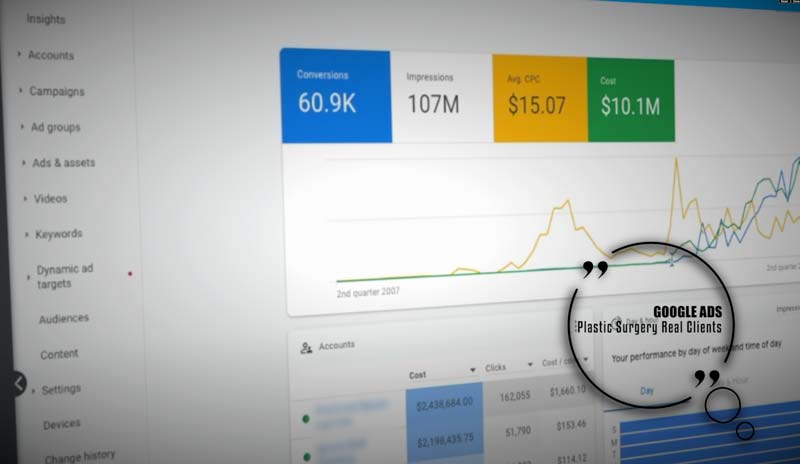
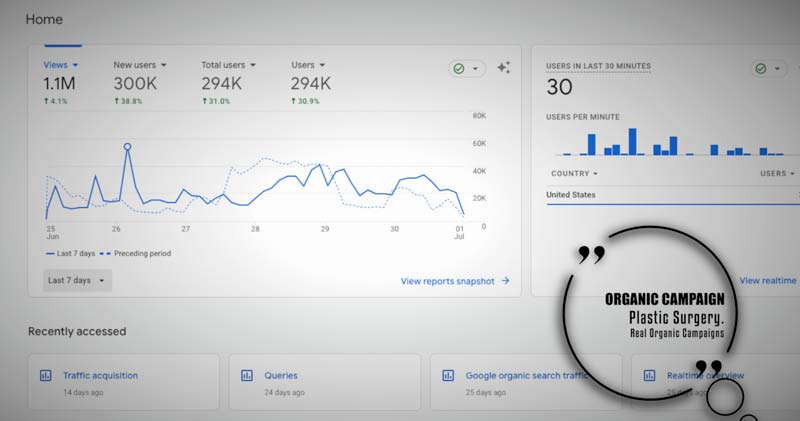
However, paid acquisition comes with a caveat: compliance and cost control are non-negotiable. Ad platforms have strict policies around before-and-after photos, claims about results, and sensitive health content. Violating these rules can get your ads rejected—or worse, your account banned. That means your creative must walk a careful line, focusing on lifestyle transformations, testimonials, and educational content rather than making exaggerated promises. At the same time, budgets must be managed with discipline. The most successful practices monitor cost per lead (CPL) daily, pause underperforming creatives quickly, and reinvest in the campaigns with the highest ROI.
The bottom line is that paid acquisition is not about spending more—it’s about spending smarter. Clinics that treat advertising as a testing ground for messaging, while combining it with strong retargeting and compliant creative, consistently generate qualified leads that convert into booked consultations. When paired with a solid SEO and content foundation, paid media becomes the fuel that accelerates growth and keeps the pipeline consistently full.